Engineering Project Management Software is a game-changer in managing complex engineering projects. It streamlines tasks, enhances collaboration and improves tracking, leading to increased efficiency and engineering project success. In 2023, these eight software solutions stand out: Zoho Projects, Asana, Celoxis, Teamwork, LiquidPlanner, Jira, Wrike, and Hive.
Jump to:
Top engineering project management software: Comparison table
All these tools offer core project management features such as task management, time tracking, collaboration tools, resource management and reporting. But here’s how they compare across focused features that engineering teams value.
| Software | Gantt Charts | Risk Management | Agile Boards | Customizable Fields | Dynamic Scheduling | Starting Price |
|---|---|---|---|---|---|---|
| Asana | Yes | No | Yes | Yes | No | $10.99/user/month |
| Zoho Projects | Yes | No | No | Yes | No | $4/user/month |
| Celoxis | Yes | Yes | No | Yes | No | $22.5/user/month |
| Teamwork | Yes | No | No | Yes | No | $5.99/user/month |
| LiquidPlanner | Yes | No | No | No | Yes | $15/user/month |
| Jira | No | No | Yes | Yes | No | $7.75/user/month |
| Wrike | Yes | No | No | Yes | No | $9.80/user/month |
| Hive | Yes | No | No | Yes | No | $12/user/month |
Asana: Best overall

Asana is our pick for the best overall engineering project management software considering a balance of robust features, flexibility, user-friendliness, and cost-effectiveness. It’s a versatile tool that can handle various project types, making it suitable for engineering teams of all sizes. Asana’s strength lies in its simplicity and ease of use.
Pricing
Asana offers a free Basic plan in addition to paid plans, including the Premium plan at $10.99 per user per month, billed annually and the Business plan at $24.99 per user per month. Its Enterprise plan’s pricing information is available on request.
Key features
Figure A
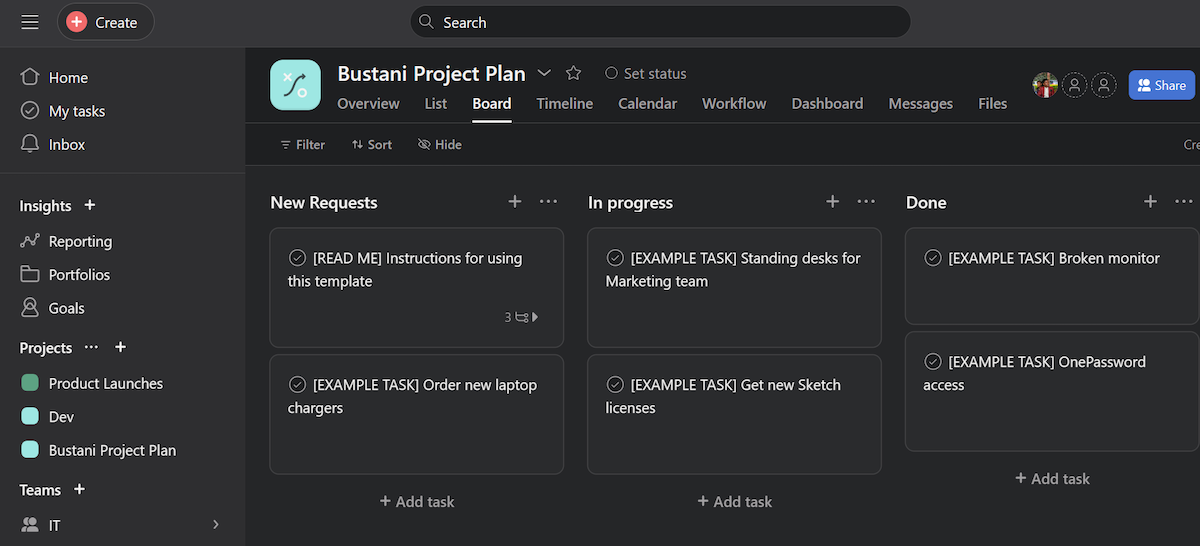
- Project timeline for planning and structuring project schedules.
- Portfolios for monitoring the progress of multiple projects at once.
- Automation to create rule-based triggers, reduce manual tasks and increase efficiency.
- Customizable workflows (Figure A) to offer engineering teams the flexibility needed for their projects.
Pros
- User-friendly interface that’s easy to navigate.
- Robust set of features for managing complex projects.
- Excellent collaboration tools for team communication.
- Good for teams of all sizes.
Cons
- The free version is quite limited, and the premium version can be expensive for small teams.
- Can be overwhelming for new users due to the number of features
For more information, check out our full Asana review.
Zoho Projects: Best for scalability

Zoho Projects is a comprehensive project management solution that’s ideal for growing engineering teams. It offers a range of features designed to streamline project planning, tracking, and collaboration. Zoho Projects stands out for its scalability, making it a great choice for teams that anticipate growth or have fluctuating project demands. It also offers impressive customization options, allowing teams to tailor the platform to their specific needs.
Pricing
Zoho Projects offers two paid plans besides a free plan. Billed annually, the Premium and Enterprise plans cost $4 and $9 per user per month, respectively and $5 and $10 per user per month, when billed monthly.
Key features
Figure B
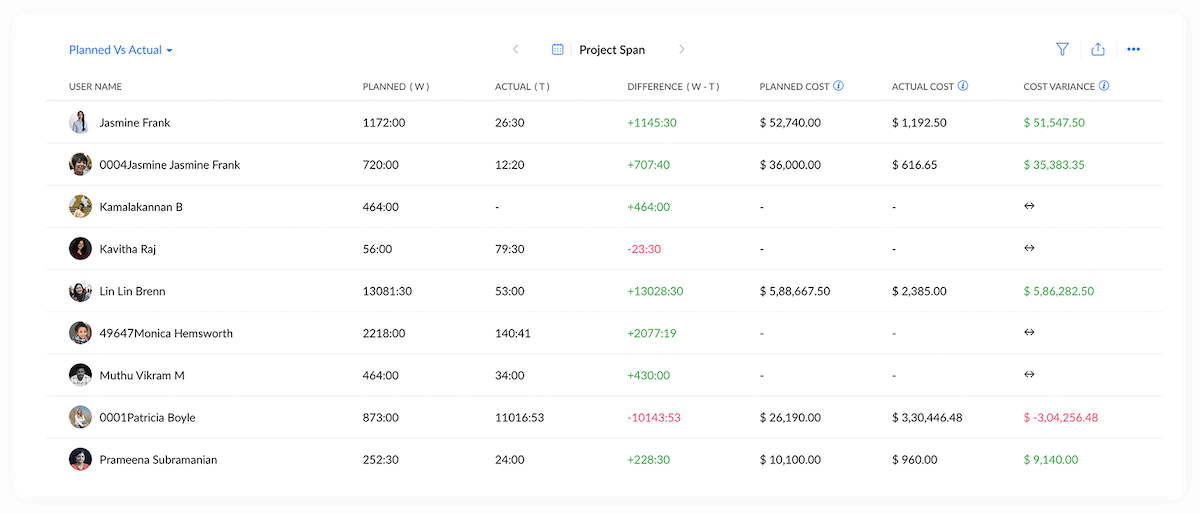
- Detailed Gantt charts provide a visual timeline for project tasks.
- Issue tracking module helps identify and manage project problems effectively.
- Time tracking (Figure B) feature allows for accurate project scheduling and resource allocation.
- Document management system keeps all project files organized and accessible.
Pros
- Scalable solution that can accommodate growing teams and projects.
- Offers a wide range of features for comprehensive project management.
- Integration with other Zoho apps and external tools enhances functionality.
- Provides good value for money with its affordable pricing plans.
Cons
- The user interface could be more intuitive and modern.
- The mobile app could be improved for better usability.
For more information, read our full Zoho Projects review.
Celoxis: Best for resource management

Celoxis is an all-in-one project management software that excels in resource management. It delivers extensive features for planning, scheduling and tracking resources, making it attractive to engineering teams that need to manage complex resource needs. Celoxis also offers project planning features like Gantt charts, project scheduling and time tracking.
Pricing
Celoxis has two pricing plans: Cloud costs $22.50 per user per month billed annually and $25 when billed monthly, and On Premise requires you to contact the company for a quote.
Key features
Figure C
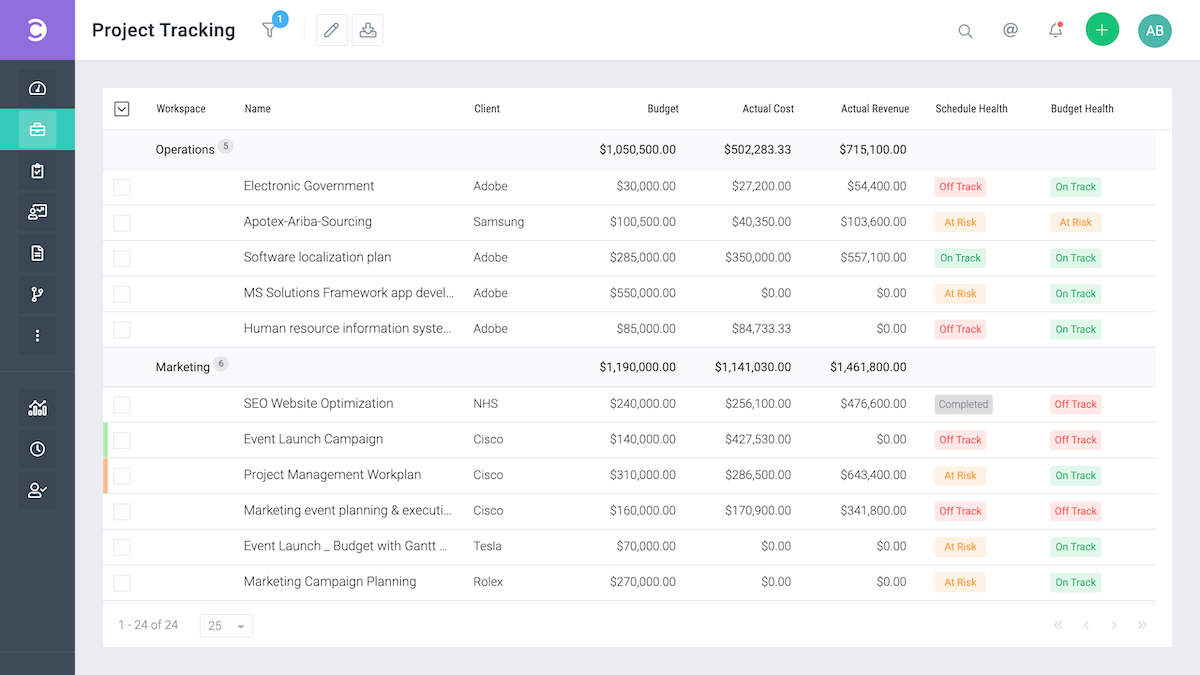
- Advanced resource management features help optimize resource allocation.
- Interactive Gantt charts provide a visual timeline for project tasks.
- Comprehensive project tracking (Figure C) allows for easy monitoring of project progress.
- Customizable dashboards provide a quick overview of project status.
Pros
- Excellent resource management capabilities.
- Comprehensive feature set for end-to-end project management.
- Offers both cloud-based and on-premise deployment options.
- Good value for money with affordable pricing plans.
Cons
- The user interface could be more intuitive.
- The learning curve can be steep for new users.
For more information, read the full Celoxis review.
Teamwork: Best for collaboration

Teamwork is a project management tool that puts collaboration at its core. It offers a range of features designed to enhance team communication and collaboration, making it a great choice for engineering teams that work closely together. Teamwork also offers robust task management features, allowing teams to easily create, assign and track tasks.
Pricing
Teamwork offers a free plan. The per user per month costs of the Starter, Deliver and Grow plans are $5.99, $9.99 and $19.99, respectively, when billed annually. They cost $8.99, $13.99 and 25.99, respectively, when billed monthly. However, the Scale plan requires you to contact Teamwork for a quote.
Key features
Figure D
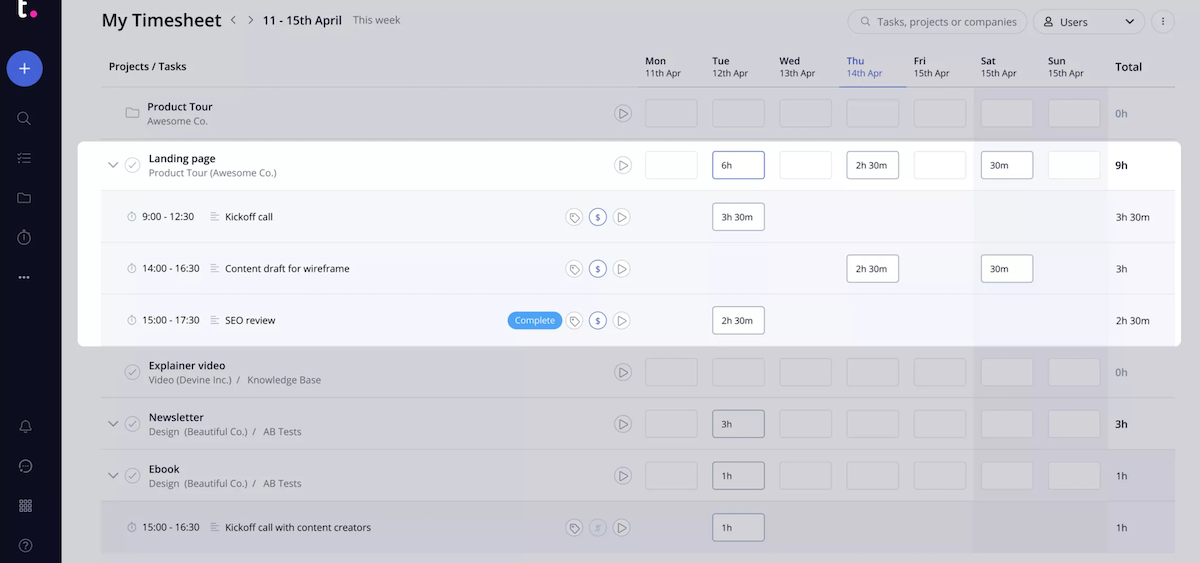
- Advanced collaboration features like team chat and file sharing enhance team communication.
- Task management features for keeping track of project tasks and deadlines.
- Project templates to save time in setting up new projects.
- Native time tracking features (Figure D) to monitor team productivity.
Pros
- Excellent collaboration features improve team communication.
- User-friendly interface makes it easy for teams to get started.
- Customizable to suit different project needs and workflows.
- Offers a free plan with basic project management features.
Cons
- Advanced features are only available in the higher-priced plans.
- Some users report occasional lags and glitches in the software.
For more information, check out our full Teamwork review.
LiquidPlanner: Best for dynamic project management

LiquidPlanner is a dynamic project management tool designed for fast-paced engineering teams. It offers a range of features designed to adapt to changes and uncertainties in projects, making it a great choice for teams working in dynamic environments. LiquidPlanner’s standout feature is its predictive scheduling engine, which automatically adjusts project schedules based on priority and resource availability.
Pricing
Its three pricing plans are Essentials at $15 per user per month, Professional at $25 per user per month and Ultimate at $35 per user per month, all billed annually. Contact LiquidPlanner for volume pricing for the Ultimate plan.
Key features
Figure E
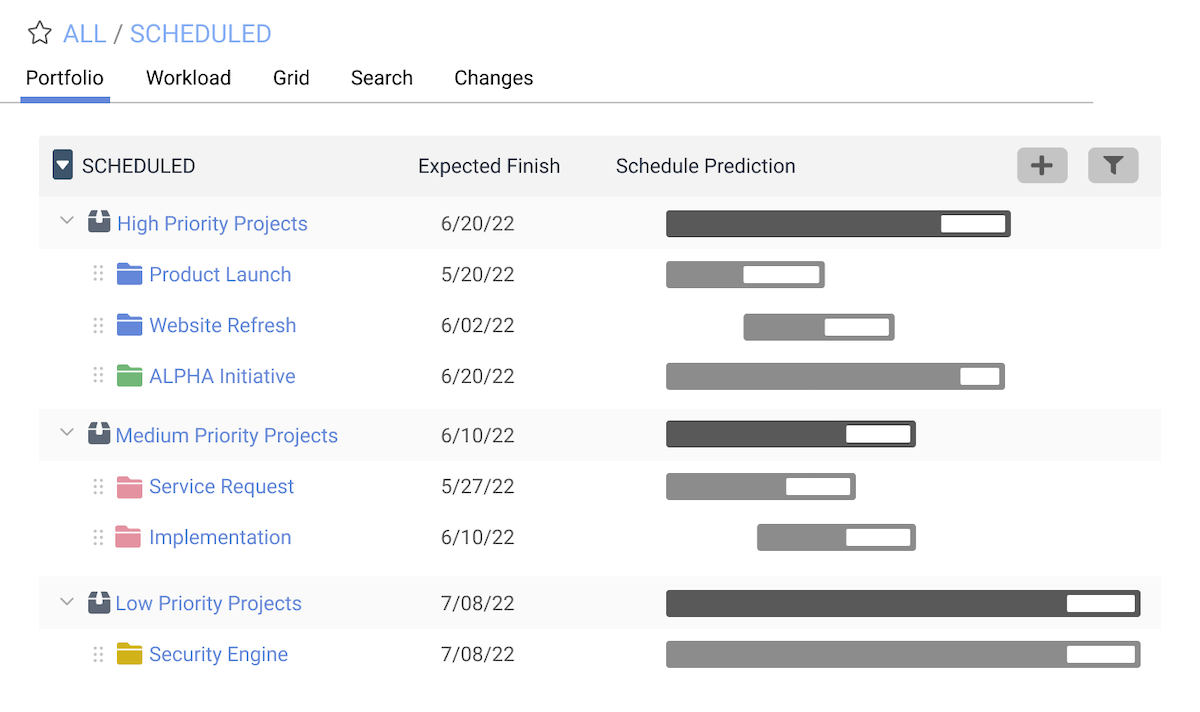
- Predictive scheduling (Figure E) dynamically adjusts project timelines based on changes.
- Automatic resource leveling features eliminate overload and optimize resource allocation and utilization.
- Time tracking feature allows for accurate project scheduling and resource allocation.
- Customizable dashboards provide a quick overview of project status.
Pros
- Dynamic project management features adapt to project changes.
- Comprehensive feature set for end-to-end project management.
- Integration with popular tools like Dropbox, Zapier and Google Drive enhances functionality.
- Offers a free trial to test its features.
Cons
- User interface can be complex for beginners.
- Has no free plan plus premium pricing can be expensive for smaller teams.
For more information, read the full LiquidPlanner review.
Jira: Best for agile engineering teams

Jira by Atlassian is a powerful project management tool designed specifically for agile teams. It’s particularly popular among software engineering teams due to its robust features for issue tracking, agile reporting and software development lifecycle management. Jira’s agile-centric features such as Scrum boards, Kanban boards and agile reporting make it the best choice for engineering teams following agile methodologies.
Pricing
Jira’s free plan covers up to 10 users. But for larger teams subscribing monthly, the Standard plan costs $7.75 per user per month and the Premium plan is $15.25 per user per month. Jira’s Enterprise plan is billed annually, and you must request a quote to get pricing information.
Key features
Figure F
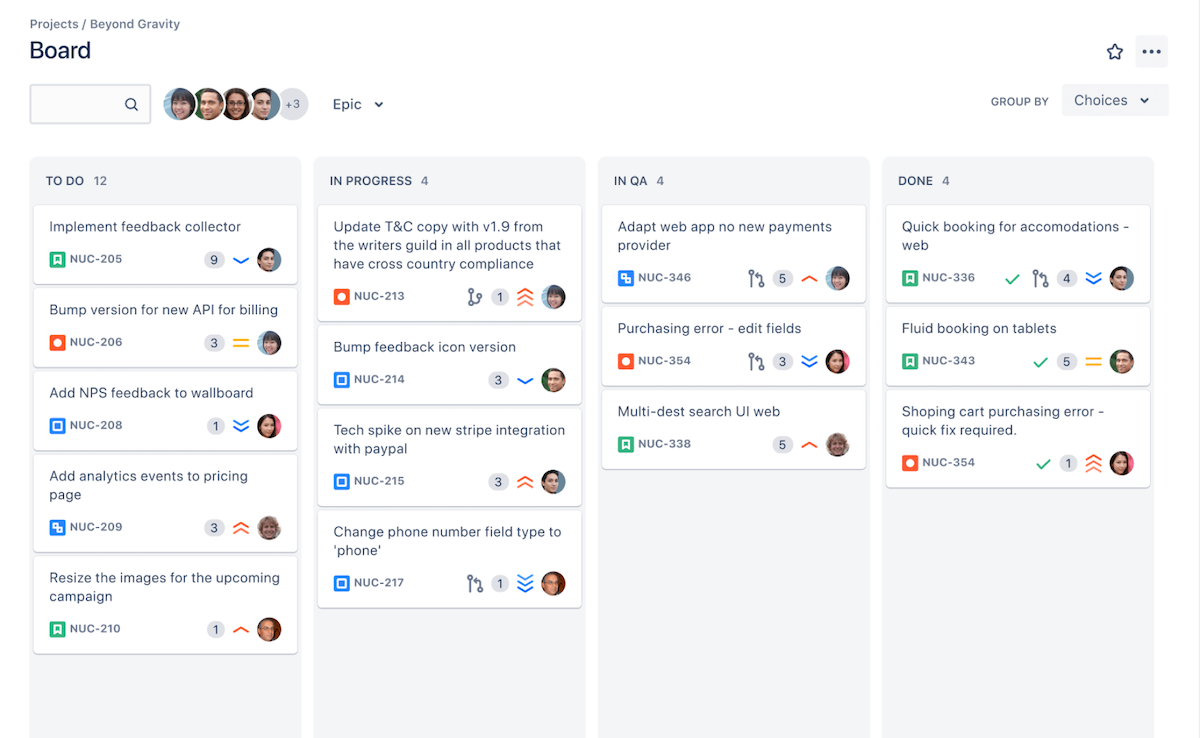
- Agile boards feature both Scrum and Kanban (Figure F) to provide a visual overview of project progress in real-time.
- Customizable workflows allow teams to map out every step of a project.
- Advanced reporting tools provide insights for data-driven decision making.
- Integration with developer tools such as Bitbucket and Confluence enhances software project management.
Pros
- Robust features cater specifically to the needs of agile teams.
- Highly customizable to suit different project needs and workflows.
- Integration with a wide range of developer tools enhances functionality.
- Extensive add-ons available in the Atlassian marketplace.
Cons
- User interface can be complex for beginners.
- Configuration and customization can be time-consuming.
For more information, read the full Jira review.
Wrike: Best for customizability

Wrike is a flexible project management tool that stands out for its customizability. It offers a range of features to meet the needs of engineering teams, making it a great choice for teams with unique project management requirements. Wrike also offers rich features for task management, project tracking and collaboration.
Pricing
Wrike has five plans: the Free plan, Team plan at $9.80 per user per month, Business plan at $24.80 per user per month and Enterprise and Pinnacle plans whose pricing information isn’t publicly listed.
Key features
Figure G
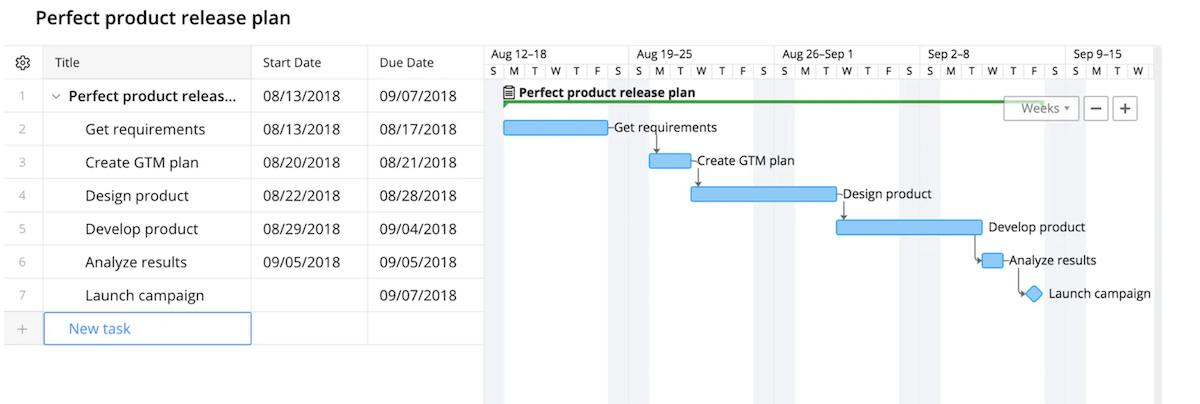
- Customizable dashboards and workflows cater to specific project needs.
- Advanced collaboration features such as team chat and file sharing enhance team communication.
- Interactive Gantt charts (Figure G) enable teams to visualize project timelines and dependencies.
- Advanced reporting and business intelligence.
Pros
- Highly customizable to suit different project needs and workflows.
- Comprehensive feature set for end-to-end project management.
- User-friendly interface makes it easy for teams to get started.
- Offers a free plan with basic project management features.
Cons
- Advanced features and customizations can be complex to set up.
- Pricing can get expensive for larger teams.
For more information, explore our full Wrike review.
Hive: Best for AI-assisted project management

Hive is a project management tool that stands out for its AI-assisted capabilities. Hive is designed for fast-moving teams and offers a unique feature called HiveMind, an AI assist that helps with content creation, email subject lines, language translation and more. Hive’s comprehensive feature set, including project and task management, collaboration tools, and over 1,000 integrations, makes it a versatile choice for engineering teams.
Pricing
Besides a free plan, Hive offers two paid plans: Teams costs $12 per user per month billed annually and $18 when billed monthly and Enterprise information isn’t listed.
Key features
Figure H

- HiveMind AI enhances productivity with automated project planning and content creation.
- Advanced collaboration features such as team chat and file sharing enhance team communication.
- Comprehensive project tracking allows for easy monitoring of project progress (Figure H).
- Integration with over 1,000 tools brings information into one centralized dashboard.
Pros
- Unique AI-assisted features enhance productivity and efficiency.
- Comprehensive feature set for end-to-end project management.
- User-friendly interface makes it easy for teams to get started.
- Offers a free trial to test its features.
Cons
- Advanced features and customizations can be complex to set up.
- The learning curve can be steep due to its unique approach to project management.
For more information, read the full Hive review.
Key features of engineering project management software
When choosing engineering project management software you should consider features that can greatly enhance the efficiency and effectiveness of your project management processes. These features include Gantt charts, risk management, agile boards, customizable fields and dynamic scheduling.
Gantt charts
Gantt charts provide a visual timeline for your project, displaying tasks, durations and dependencies. This feature is crucial for planning and scheduling, allowing you to see the entire scope of the project at a glance. It helps in identifying critical paths, managing resources, and tracking progress. If your project involves complex tasks with multiple dependencies, a Gantt chart feature is a must-have.
Risk management
Risk management features help in identifying, assessing and mitigating potential risks in your project. This could include anything from budget overruns to schedule slippages or resource shortages. By proactively managing risks, you can ensure that your project stays on track and any issues are dealt with promptly.
Agile boards
Agile boards are a key feature for teams that use agile methodologies. They provide a visual representation of tasks, allowing teams to see the status of each task and who’s working on it. Agile boards can help improve transparency, collaboration and productivity in your team.
Customizable fields
Customizable fields allow you to tailor your project management software to your specific needs. You can create custom fields for tasks, projects or resources, allowing you to track the information that’s most important to your team. This feature can enhance the flexibility and adaptability of your project management process.
Dynamic scheduling
Dynamic scheduling is a powerful feature that automatically adjusts your schedule based on changes in resources, priorities or tasks. This can be particularly useful in engineering projects, where changes are often the norm rather than the exception. Dynamic scheduling can help ensure that your project stays on track, even when unexpected changes occur.
How do I choose the best engineering project management software for my business?
Choosing the right engineering project management software depends on a variety of factors. Here are some key considerations to help guide your decision:
Define your needs
The first step is to understand your team’s needs. What challenges are you facing in your current project management process? What features are you looking for in a software solution? The answers to these questions will guide your selection process.
Consider the size and complexity of your projects
Different software solutions are better suited to different types of projects. If you’re managing large, complex engineering projects, you’ll need robust software with advanced features such as risk management and dynamic scheduling. For smaller, simpler projects, a more basic solution may suffice.
Evaluate usability
The best software is one that your team will actually use. Look for a solution that is user-friendly and intuitive. Many providers offer free trials, which can be a great way to test the software’s usability.
Check integration capabilities
Your project management software should integrate with the other tools your team is using. This can streamline your workflows and improve efficiency.
Assess customer support
Good customer support can be a lifesaver when you’re facing technical issues. Look for a provider that offers timely and helpful support.
Consider pricing
Finally, consider your budget. The most expensive software isn’t necessarily the best, and many affordable solutions offer great value. Be sure to consider the total cost, including any setup fees and ongoing costs.
Methodology
In our quest to identify the top engineering project management software for 2023, we thoroughly evaluated solutions from various top providers. We compared their features, capabilities, and pricing structures to deliver the eight tools on our list. Our evaluation was based on the following factors:
- Core project management capabilities: We examined the core project management features of each solution, which are fundamental for planning, executing and monitoring engineering projects.
- Customizability and integration: We assessed the extent to which each solution can be customized to meet unique project needs, as well as the ability of each software to integrate with other tools.
- Usability and user support: The user-friendliness of a solution is critical for its adoption and effective use, so we evaluated the ease of use of each software and the quality of customer support provided by the vendor.
- Value for money: We considered the pricing structures of each solution, keeping in mind that the best software offers good value for money.
- Security and data management: Given the sensitive nature of project data, we evaluated the security measures implemented by each software, including data encryption, user authentication and data backup capabilities.
- Scalability: Lastly, we assessed each solution’s ability to scale in response to changing project needs and team sizes.
These factors enabled us to identify the top eight engineering project management software for 2023.
Source of Article



